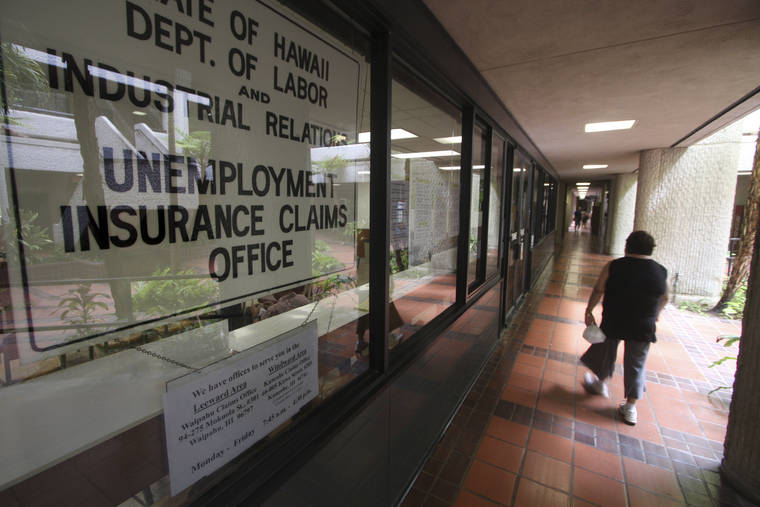Hawaii jobless rate unchanged ahead of coronavirus’ impact

STAR-ADVERTISER FILE
A rise in initial unemployment claims appears to be signaling that the coronavirus impact is on its way. But the unemployment report released Friday showed that the impact was still absent in the first month of the year.
Hawaii’s unemployment rate for January held steady at 2.7% and nonfarm payroll jobs fell by just 300 in what likely will be the calm before the storm.
A rise in initial unemployment claims appears to be signaling that the coronavirus impact is on its way.
Local economists expect thousands of jobs to be lost in the labor market as the effect of the deadly virus begins to be felt statewide.
But the unemployment report released Friday by the state Department of Labor and Industrial Relations showed that the impact was still absent in the first month of the year.
“We had no COVID-19 impact in January,” said Eugene Tian, chief economist for the state Department of Business, Economic Development and Tourism. “As a matter of fact, we had a great January. Visitor arrivals increased 5.1% and visitor spending increased 5.0% in January. Reflecting the activities for January, state general fund tax revenue collection in February increased 14.5% from the same month a year ago.”
But DBEDT said in its first-quarter economic forecast released Thursday that the nonagricultural payroll job count will decrease by 0.2% this year because of the coronavirus outbreak.
Don't miss out on what's happening!
Stay in touch with breaking news, as it happens, conveniently in your email inbox. It's FREE!
“This will be the first time non-ag jobs decreased since 2010,” Tian said.
Hawaii’s 2.7% unemployment rate matched the December number after the figure for that month was revised upward from 2.6%. Total nonagricultural jobs, which are calculated from a mail survey of employers and include people who might hold multiple positions, fell to 659,300 from 659,600.
”We have started to see the impact of COVID-19 since the beginning of March,” Tian said. “For the first week of March, initial unemployment claims increased 11.3% from the same week last year. The increase on Oahu was 19.4%, reflecting the decrease in visitor arrivals from international.”
Tian said tighter control and cooperation will avoid the community spread and make the impact shorter.
“If the outbreak is under control within three months or less, Hawaii may avoid the economic recession,” Tian said. “If it lasts more than three months, a recession may not be avoided. I feel confident that, with the government and the communities working together, the outbreak will be under control within three months in the U.S. and Hawaii.”
Tian said Hawaii has been affected more than the mainland because of the state’s reliance on tourism.
“Hawaii’s tourism industry contributed about 17% of Hawaii’s GDP (gross domestic product) while tourism contributed less than 3% for the nation,” he said.
DBEDT is forecasting that growth in Hawaii’s economy will slow from 1.2% in 2019 to 0.5% in 2020 before improving in 2021.



